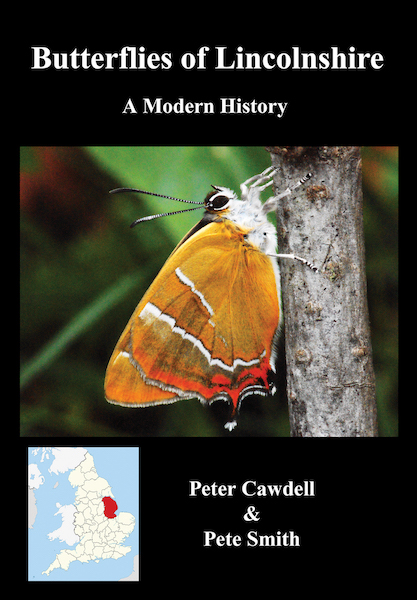 |
Butterflies have always enchanted us with their beauty and fragility. We associate them with the long, hot, lazy summer days of our childhood. Within living memory, it was possible to walk for miles along lanes and amongst meadows teeming with these attractive creatures. Today, even a small piece of land harbouring a number of butterflies is a sight worthy of comment. Where have they all gone? This is a modern history, the story of the changing fortunes of butterflies in Lincolnshire over the years, recounted with affection by two life-long enthusiasts with a compulsive passion for these most endearing of insects.
All good butterfly books are histories. You cannot understand the present, fragmented distribution of a species without setting things in the context of the past. This new work on the butterflies of Lincolnshire, however, does much more than just give context. It is history written with a passion by two men who were actually there, intimately involved with the events and frequently helping to shape them. Of course, it looks back, too, to days no one alive can remember - days when Swallowtails and Large Coppers flew widely in the fens of eastern England - but it is the story of the last fifty years or so I find most gripping and which they tell so well. I had no idea how many battles were fought and won - and lost - on Lincolnshire soil.
As you would expect, the book covers all Lincolnshire species, from the long-extinct to occasional vagrants, with a full write-up on each. The format is a little different from that of most regional guides. After a brief introduction to butterfly conservation in Lincolnshire and the geography and habitats of the county, the bulk of the book consists of a series of thematic essays, some focusing on ideas, others on individual butterflies or groups of butterflies, presented not taxonomically but according to the story they help to tell. Thus, chapter 2 describes species like Brown Argus and Speckled Wood that have made unexpected gains in recent decades, while chapter 3 dwells more worryingly on the dramatic decline of once common insects like Small Copper and Wall. Later chapters embrace elusive tree-dwellers, rare residents, common residents and vagrants, to give just a few examples. The authors have researched their subjects thoroughly to give a complete account of each species, including ecological requirements and the present and past distributions (to the level of a 2 km × 2 km recording square). On top of this, copious anecdotal evidence drawn from personal experience fills out the profiles, bringing the butterflies and indeed the county to life.
As the authors remark in their introduction, a book about butterflies is inevitably a book about people. The fortunes of butterflies do not wax and wane like the phases of the moon, or ebb and flow like the tides, but are driven, directly or indirectly, by human activity, the dominant force for change in the modern world. Tragically, this change is overwhelmingly negative so far as wild nature is concerned, but butterflies have human allies too, and this book tells the stories of some of the campaigns they have fought - not always under the same flag. Particularly interesting are the accounts of reintroductions and attempted reintroductions. Chapter 9 is devoted to the ultimately unsuccessful attempt to bring back Chequered Skippers. It is a very human story of hope, effort and disappointment, of learning from mistakes and perhaps also not learning from mistakes. Other reintroductions have had happier outcomes, like that of the Marsh Fritillary, described in chapter 5. Thanks to certain larger-than-life characters, it seems Lincolnshire has had more than its fair share of unauthorised introductions and releases, a topic discussed very fairly and objectively in chapter 4. There is a clandestine (not necessarily bad - just under cover) world of butterflying I confess I had previously been only dimly aware of.
In conclusion, this is more than just a regional butterfly guide. If you live in Lincolnshire or are thinking of a trip there, it is a must - it is the most authoritative, up-to-date source of information on the species. But even if you never go there, it is quite simply a fascinating read and thoroughly recommended.
The book is priced at £25.95 (including p&p) - please contact Pete Smith for further details.